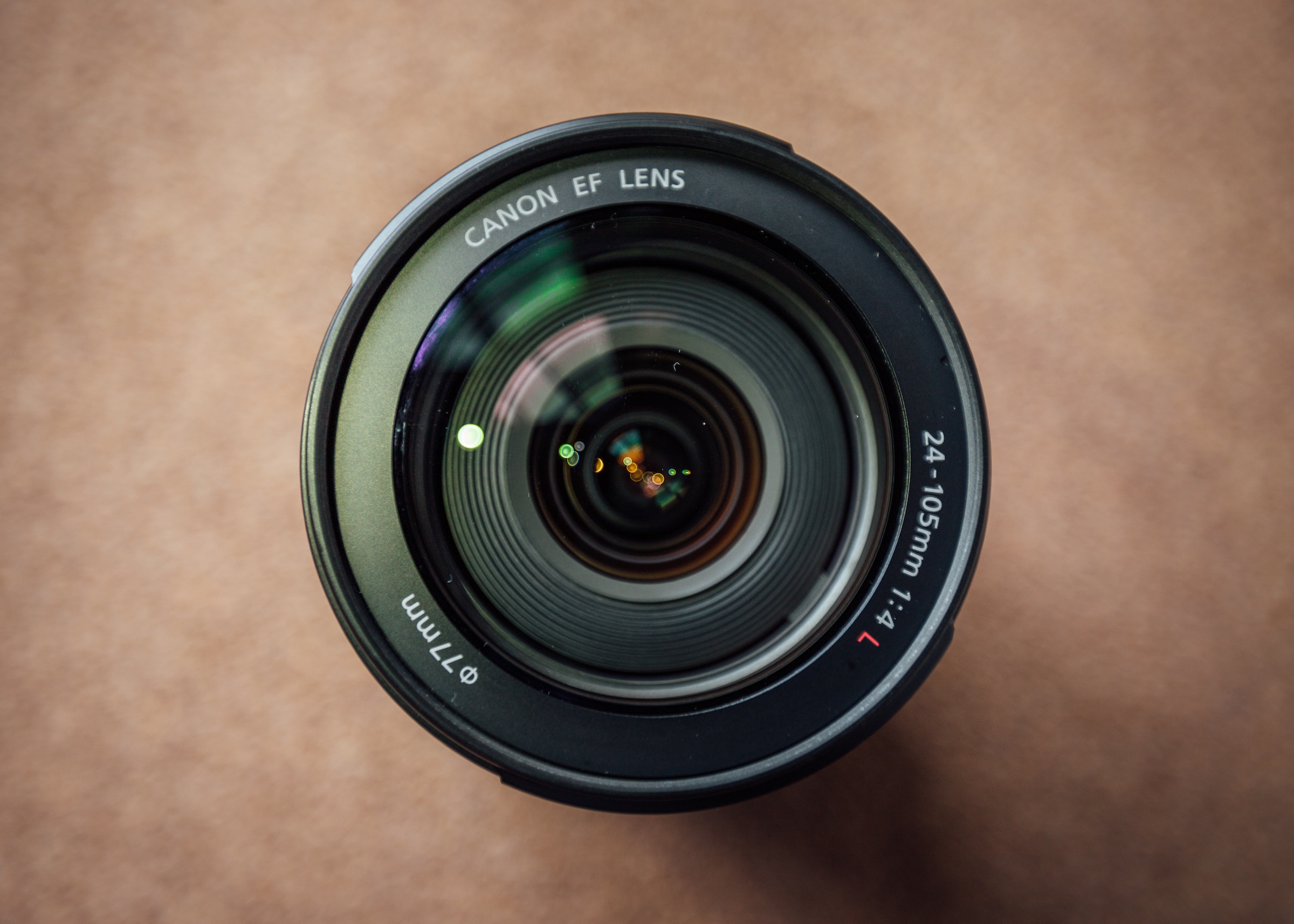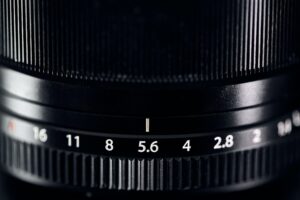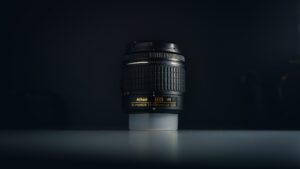Introduction
Learning how to read an MTF chart is similar to learning a new language, one that communicates the performance and quality of camera lenses.
This guide is tailored to equip you with the knowledge needed to interpret MTF charts, thereby empowering you to make informed decisions when selecting lenses for your camera.
Continue reading to unravel the layers of an MTF chart, from its basic anatomy to the intricacies of lens resolution and aberrations.
Key Takeaways
| Takeaway Points | Details |
|---|---|
| What is an MTF Chart? | A graphical representation of a lens’ optical performance |
| Key Components | Spatial Frequency, Contrast, Sagittal and Meridional Lines |
| Lens Resolution | Higher lines on the chart indicate better resolution |
| Lens Aberrations | Identified by irregularities in the plotted lines |
| Comparing Lenses | Evaluating and contrasting MTF charts of different lenses can aid in making better purchasing decisions |
1. What is an MTF Chart?
MTF stands for Modulation Transfer Function. In simple terms, an MTF chart is a graphical representation of a lens’ optical performance.
This chart is vital for photographers as it provides insight into the lens’ ability to resolve detail and contrast, which are crucial for image quality.
Definition and Importance
An MTF chart displays how well a lens can transfer the contrast of a subject onto the image sensor at different resolutions.
The better a lens is at preserving the contrast and details of a subject, the higher the image quality.
- Detail Resolving Power: The primary aspect that an MTF chart reveals is the resolving power of a lens. This is particularly important for photographers who aim for a crisp representation of their subjects.
- Contrast Rendering: Contrast is the difference in luminance or color that makes an object distinguishable. Understanding how a lens handles contrast at different spatial frequencies is fundamental for predicting how it will perform in various shooting scenarios.
- Lens Comparisons: MTF charts provide a standardized platform for comparing the performance of different lenses. This is invaluable for photographers on the quest for the perfect lens that suits their style and requirements.
Relevance to Photography
For a photographer, especially someone new to the field, getting a grasp of technical aspects such as lens performance is a leap towards capturing images as envisioned.
MTF charts are tools that translate technical lens attributes into a visual format, making it easier to understand the strengths and weaknesses of a lens.
- Informed Purchasing Decisions: Knowing how to read an MTF chart can significantly influence your lens purchases. It guides you in choosing a lens that will deliver the desired level of sharpness and contrast in your photos.
- Better Understanding of Gear: It cultivates a deeper understanding and appreciation of your gear, which is instrumental in mastering the art of photography.
- Optimizing Lens Performance: By understanding the limitations and strengths of a lens through its MTF chart, you can optimize its performance to suit your photographic needs.
2. Understanding the Basics
Before diving into the nitty-gritty of an MTF chart, it’s essential to get acquainted with its basic structure and what the axes represent.
Axis Interpretation
An MTF chart is plotted on a two-dimensional graph, with each axis representing a specific aspect of lens performance.
| Axis | Representation |
|---|---|
| Horizontal Axis | Spatial Frequency (measured in lines per millimeter) |
| Vertical Axis | Contrast (expressed as a percentage) |
- Spatial Frequency: The horizontal axis represents spatial frequency, usually measured in lines per millimeter (lp/mm). A higher spatial frequency indicates finer details.
- Contrast: The vertical axis represents contrast, usually expressed as a percentage. A higher value indicates better contrast.
Line Analysis
The lines on an MTF chart are not just arbitrary plots. They carry significant information regarding the optical performance of the lens.
- Sharpness: A line that remains high on the vertical axis across a broad range of spatial frequencies indicates a lens with good sharpness.
- Contrast Fall-off: If the lines drop significantly as spatial frequency increases, it’s indicative of contrast fall-off, which can affect the crispness of the image.
The basic understanding of the axes and lines on an MTF chart lays the foundation for a deeper exploration into the intricacies of lens performance as illustrated by these charts.
The following sections will delve into more complex aspects of MTF charts, offering a thorough insight into evaluating and comparing lenses for your photography endeavors.
3. The Anatomy of an MTF Chart
Every MTF chart comprises certain components and labels that are crucial for interpreting the data presented. Familiarizing oneself with these elements is the first step towards proficiently reading an MTF chart.
Key Components and Labels
Here are some of the key components and labels you would typically find on an MTF chart:
- Spatial Frequency: This refers to the level of detail a lens can resolve, measured in lines per millimeter (lp/mm).
- Contrast: This refers to the lens’s ability to differentiate between light and dark areas, represented as a percentage on the vertical axis.
- Sagittal and Meridional Lines: These lines represent the lens’s performance at different orientations and are crucial for understanding a lens’s overall optical quality.
- Aperture Values: MTF charts often include data for different aperture values, showing how a lens performs at various f-stops.
Below is an informational table summarizing the key components and labels on an MTF chart:
| Component | Description | Representation |
|---|---|---|
| Spatial Frequency | Level of detail a lens can resolve | Measured in lines per millimeter (lp/mm) |
| Contrast | Ability to differentiate between light and dark areas | Expressed as a percentage |
| Sagittal Lines | Lens performance along a radial line from the center to the edge of the frame | Plotted lines on the MTF chart |
| Meridional Lines | Lens performance along lines perpendicular to the sagittal lines | Plotted lines on the MTF chart |
| Aperture Values | Lens performance at different f-stops | Often specified next to the plotted lines |
4. Spatial Frequency and Contrast
Spatial frequency and contrast are the crux of an MTF chart. They are integral to understanding how a lens will perform in real-world scenarios.
Defining Spatial Frequency
Spatial frequency, measured in lines per millimeter (lp/mm), indicates the amount of fine detail a lens can resolve.
Higher spatial frequencies represent finer details, while lower spatial frequencies represent broader or coarser details.
- Low Spatial Frequency: Indicates how a lens handles broader details and contrast between larger areas.
- High Spatial Frequency: Indicates the lens’s ability to resolve finer details.
How Contrast is Represented
Contrast on an MTF chart is expressed as a percentage, representing how well a lens can reproduce the difference between light and dark areas.
- 100% Contrast: Indicates perfect reproduction of contrast, which is ideal though rarely achieved.
- 0% Contrast: Indicates a complete loss of contrast, where the lens cannot differentiate between light and dark.
Understanding the interaction between spatial frequency and contrast on an MTF chart provides a window into the lens’s performance in rendering fine details and contrast, which are imperative for image quality.
5. Sagittal and Meridional Lines
MTF charts exhibit two sets of lines, sagittal and meridional, each representing lens performance at different orientations.
Grasping the distinction between these lines is pivotal for a thorough comprehension of a lens’s optical quality.
Understanding the Difference
Sagittal and Meridional lines are plotted based on measurements taken in different orientations:
- Sagittal Lines: Represent the lens’s performance along a radial line from the center to the edge of the frame.
- Meridional Lines: Represent the lens’s performance along lines perpendicular to the sagittal lines.
Importance in Lens Performance
The behavior of these lines on an MTF chart unveils a lens’s ability to handle different types of detail, from center to edge.
A closer examination of these lines and their divergence or convergence provides insights into potential lens aberrations and the overall sharpness and clarity a lens can offer.
By now, a foundational understanding of MTF charts should be established. The upcoming sections will further delve into evaluating lens resolution, identifying common lens aberrations, and practical application of MTF charts in lens selection to enhance your photography experience.
6. Evaluating Lens Resolution
Lens resolution is a critical factor when it comes to image quality. The higher the resolution, the more detail a lens can capture, which is a vital aspect for photographers keen on producing sharp images.
Reading the Lines
On an MTF chart, the position and shape of the lines indicate the lens’s resolving power.
- Higher Lines: A line closer to the top of the chart (near the 100% mark) indicates better resolution.
- Lower Lines: A line towards the bottom of the chart indicates poorer resolution.
How it Relates to Lens Sharpness
The sharpness of a lens is directly related to its resolving power. A lens with high resolution will render images with crisp, clear details, which is crucial for photographers aiming for a professional finish to their work.
7. Distortion and Aberrations
Distortions and aberrations are common challenges in lenses that can significantly affect image quality. Understanding how these are represented on an MTF chart can help in choosing lenses with minimal aberrations.
Identifying Common Lens Aberrations
Some common lens aberrations include:
- Chromatic Aberration: This occurs when a lens fails to focus all colors to the same convergence point, resulting in color fringing.
- Spherical Aberration: This happens when light rays entering a lens near its edge are focused at different points along the axis compared to rays entering near the center.
How they Reflect on MTF Charts
Aberrations manifest as inconsistencies or irregularities in the plotted lines on an MTF chart.
- Regular Line Patterns: Indicate fewer aberrations and better optical quality.
- Irregular Line Patterns: Indicate potential distortion or aberrations affecting lens performance.
Below is an informational table summarizing how lens resolution and aberrations are represented on an MTF chart:
| Aspect | Description | Representation on MTF Chart |
|---|---|---|
| Resolution | The ability of a lens to resolve detail | Higher lines indicate better resolution |
| Chromatic Aberration | Failure to focus all colors to the same convergence point | Irregularities in line patterns |
| Spherical Aberration | Diverging focal points for light rays entering near the edge versus the center of the lens | Deviations in line consistency |
8. Comparing Lenses through MTF Charts
Comparing lenses through MTF charts can significantly aid in making well-informed purchasing decisions. It provides a visual representation of how different lenses perform under similar conditions.
Assessing Lenses Side by Side
When comparing lenses:
- Examine Line Heights: Higher lines indicate better resolution and contrast which are crucial for image quality.
- Check for Consistency: Consistent line patterns across different spatial frequencies signify a well-corrected lens with fewer aberrations.
What to Look For
- Sharpness: Look for lenses with lines staying closer to the top of the chart across a wide range of spatial frequencies.
- Minimal Aberrations: Lenses with smoother, more consistent lines generally have fewer aberrations which result in better image quality.
The subsequent sections will guide you on applying the knowledge acquired from MTF charts in practical scenarios, making a significant difference in your lens selection process and ultimately, the quality of images you create.
9. Practical Application: Choosing Your Lens
The knowledge gleaned from MTF charts is not just theoretical but can be instrumental in making lens selections that align with your photography goals.
Utilizing MTF Charts in Real-World Scenarios
When it comes to practical application, MTF charts can be a reliable tool for predicting lens performance in various settings.
- Sharpness: Choose lenses with higher lines on the MTF chart for scenarios where sharpness is paramount such as landscape or architectural photography.
- Contrast Handling: Lenses that maintain good contrast at higher spatial frequencies are preferable for scenarios with intricate details.
Tips for Making Informed Choices
Here are some tips to consider when analyzing MTF charts for lens selection:
- Compare Similar Lenses: When comparing lenses, ensure they are of similar types and focal lengths for a fair comparison.
- Consider Your Photography Niche: The importance of certain lens qualities may vary depending on your photography niche. For instance, a portrait photographer might prioritize a lens with beautiful bokeh over absolute sharpness.
Below is a table summarizing tips for making informed lens choices using MTF charts:
| Tip | Description |
|---|---|
| Comparing Similar Lenses | Ensure lenses are of similar types and focal lengths for a fair comparison. |
| Considering Photography Niche | Prioritize lens qualities crucial for your specific niche. |
| Analyzing Sharpness and Contrast | Look for higher lines on the MTF chart indicating better sharpness and contrast. |
| Evaluating Aberrations | Smoother, consistent lines on the MTF chart usually indicate fewer aberrations. |
10. Beyond MTF Charts
MTF Charts are a substantial resource for evaluating lens performance, yet they are not the sole tools available.
It’s beneficial to explore other lens evaluation tools and resources to gain a well-rounded understanding of lens performance.
Other Lens Evaluation Tools
There are other tools and platforms available for evaluating lens performance, including lens review sites and software applications that provide optical analysis.
- Lens Review Sites: Websites dedicated to lens reviews provide valuable insights and real-world performance analysis.
- Optical Analysis Software: Software applications can provide detailed optical analysis, often with user-friendly interfaces.
Further Learning Resources
Expanding your knowledge through various resources can significantly enhance your understanding of lens performance and its impact on photography.
- Online Courses: There are numerous online platforms offering courses on lens optics and photography.
- Books: Plenty of well-written books delve into the technical aspects of lenses and optics, which are worth exploring.
This concludes our comprehensive guide on how to read MTF charts. With the knowledge acquired, you are now equipped to make informed decisions in selecting lenses that will serve your creative endeavors in photography.








